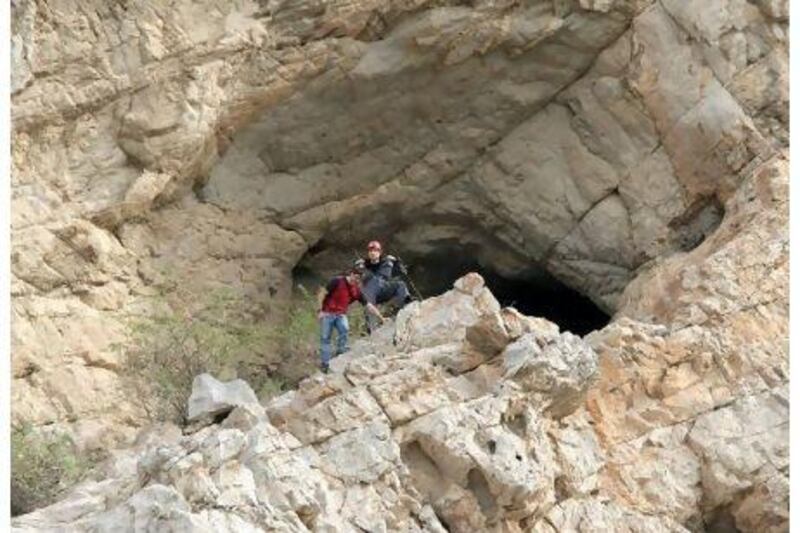RAS AL KHAIMAH // The world's leading cave scientists have joined an Emirati geography professor to search for a fabled cave near the Oman border.
Dr Asma al Ketbi, the head of the Emirates Geographic Society and a geography professor for UAE University, hopes to find her "dream cave" in the mountains of northern Ras al Khaimah, where the cries of jinn - supernatural creatures that occupy a parallel world in Arab folklore - are said to be common.
The myths surrounding the dark holes caught the interest of Dr al Kebti, who invited a group of the world's top cavers to separate myth from fact and discover what the noises were really about. To sweeten the deal, she has called on the public for information on local caves and will offer a reward of Dh10,000 to anyone who can find a cave with a depth of 50 metres or more.
"If there is a horizontal cave, it's what any geologist could dream of," said Dr al Ketbi. "From our point of view we could find our structure that could tell us about the rain history of this area, the wet period of the past 300,000 years. That was my hope."
The search for an extensive horizontal cave, rumoured to extend hundreds of metres into the mountain near the Oman border, began yesterday morning with several false trails.
"I am not going to give up yet on my dream cave," said Dr al Ketbi. "Today the plan was to get into the cave, but now we're just going to drive into the wadis and check at the rocks, and then we will plan other studies not necessarily directly related to caves."
Their search will take them through the mountains, from RAK to Dibba. The caving expedition is the first of its kind in the Northern Emirates and includes a microbiologist, hydrologist, physicist, geologist, and a geographer from the Karst Research Institute in Slovenia.
The team were the first to research China's Stone Forest, a UNESCO heritage site of 20 to 30-metre limestone pillars, and will now have five days to hunt for a cave in the Northern Emirates.
A cave could reveal significant clues about the mountain's origins, the climate millions of years ago, water flow, microbiology and pollution.
"First we have to check the cave in detail, because many stories exist," said Dr Tadej Slabe, the project leader and head of Karst Research Institute. "Then we will try to make a map, and based on the map we will try to research the cave and make a complex study of the cave and its origins."
Karst rock formations like those found here are known as aquifers and are often a main source of fresh water. With a local annual precipitation of 400mm, karst springs are known to exist in the area. Karst is a topography in which the landscape is largely shaped by the dissolving action of water on bedrock.
Microbiologists will also follow the water trail and analyse the precipitation for bacteria, and search for amoebae and water parasites. After the field work is complete, analysis will take months before the findings are published.
But before the cave's secrets can go under the microscope, a cave must be found. Local lore says the cave has two entrances and that "voices" - human and otherwise - come from some caves in the area.
"We are suspicious that this voice is here," said Nadja Zupan Hajna, a geologist from the Karst Research Institute. "It implies there is a lot of water here. Perhaps an open channel to the sea."
Yesterday scientists searched a series of arched, 10-metre-deep caverns in the mountains beside the Oman border.
While Jebel Hafeet's Magharet Qasir Hafeet cave boasts a depth of 96 metres, it is hoped this expedition - the first of its kind in the Northern Emirates - will find one that uncovers the secrets of the north's limestone mountains.
Dr al Ketbi has urged outdoor enthusiasts to follow Slovenia's example and search for themselves. Slovenia is known for more than 10,000 caves under a karst landscape that is created when carbonate rock, like the limestone of the Hajjar Mountains, is dissolved by water that is rich in carbon dioxide.
"At the end of the day, at least we know now what is there," said Dr al Ketbi. "I am still going to look for this large cave because the caves are the best place to know the history of the wet period in any climate."
Anyone who can assist in the search for a cave with a depth of 50 metres or more can contact Dr al Ketbi at asma@uaeu.ac.ae or through the geographic society.
azacharias@thenational.ae






